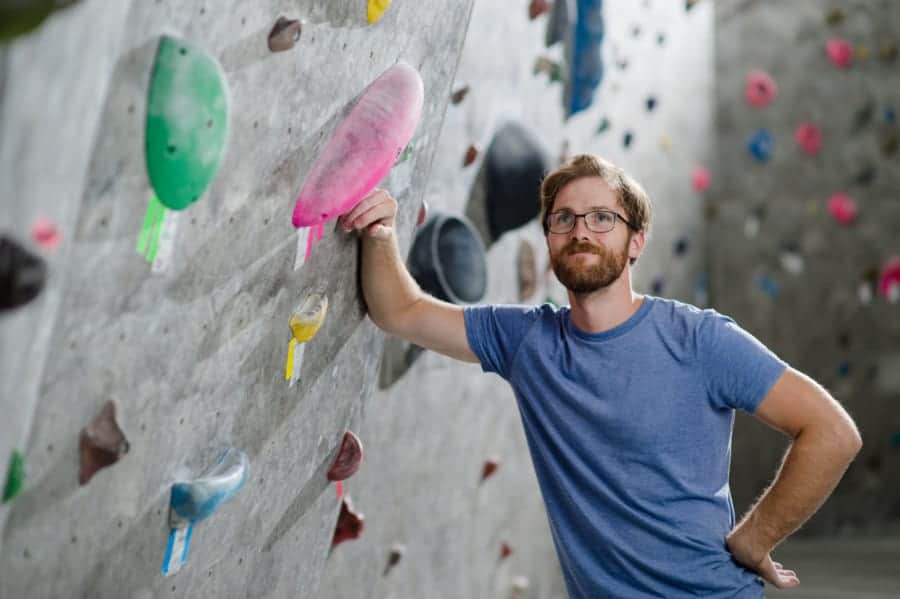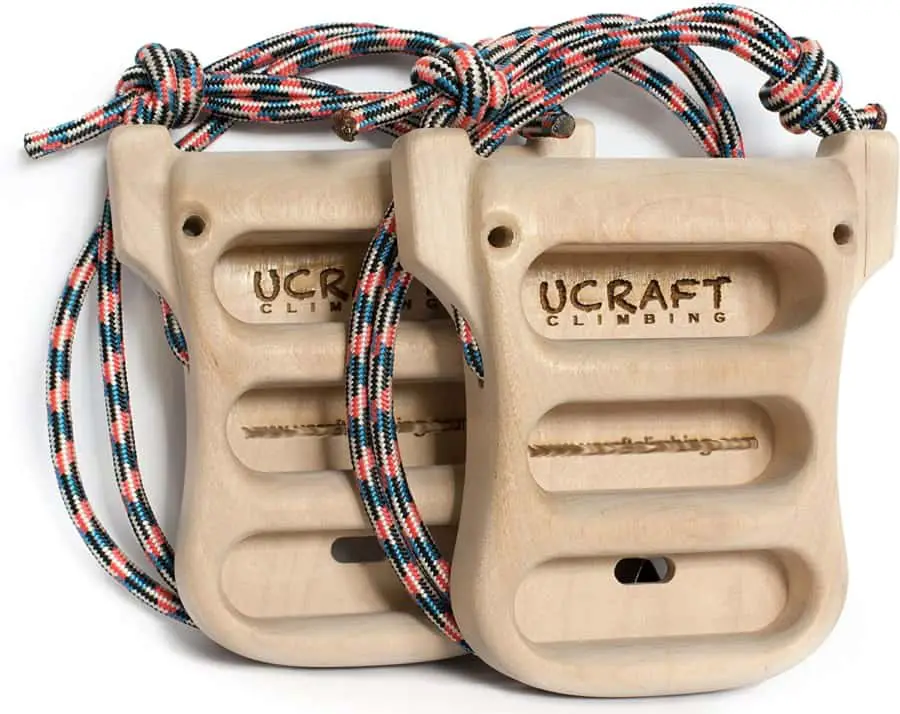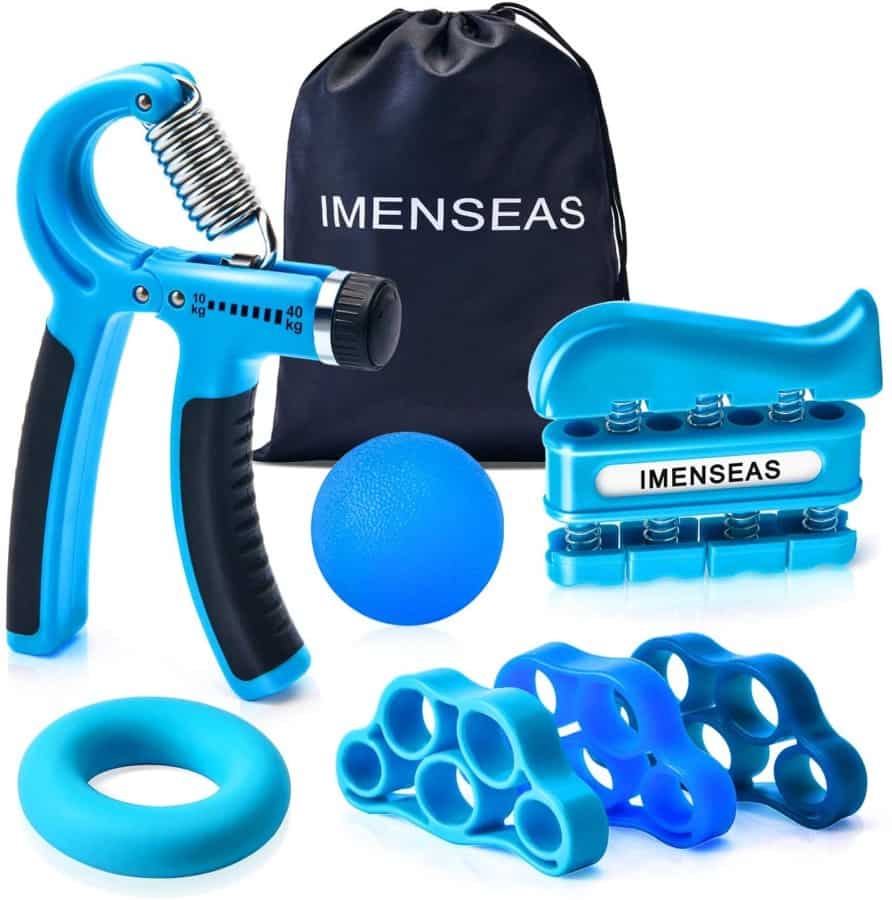When I first started climbing, I was obsessed and wanted to climb every day. This got me thinking, how often should you climb?
Climbers should climb between 3-4 days per week to get the most gains while also minimizing the chance of tendon injuries. If you climb more than 4 days per week, you significantly increase your chance of tendon injury, which will push back any gains you made. As you get into harder training, it is important to take more rest days to allow your body to recover enough for the next climbing session.
Depending on your goals, you may need to climb more or less frequently so it is important to identify your goals and figure out what part of the training cycle you are in to help you decide how often you should climb.
Training cycles affect how often you should climb
There are three main training cycles that a climber goes through. Each cycle has a specific goal that affects how often you should be climbing and at what intensity.
- Learning, which is a stage that you climb as often as possible and implement new techniques and skills on low-intensity climbs
- Training, which is a stage that you climb 3-5 days a week taking skills and techniques you’ve already learned and hone them on rather difficult climbs until they are almost second nature
- Performance, which is a stage that has the most rest days so you can recover 100% before performing in a competition and can also be applicable to people who are going on climbing trips so they have a short period of time to accomplish their goal climb.
For most beginner climbers, they will spend the majority of their time in the learning and training cycle. Though many beginner climbers make the mistake of spending more time in the training stage when they should be spending more time in the learning cycle.
Learning Cycle Overview
- Climbing frequency: Up-to 7 days per week
- Session duration: 30-90 minutes
The learning cycle is when you introduce a new concept to your climbing, such as a new technique. During this stage you will be practicing the new concept on easier climbs until your body becomes familiar with the activity and thus it will be easier to implement on more difficult climbs.
Beginners should spend the majority of their time in this stage as it will help build up the automatic responses to different sequences or situations you may find yourself in while climbing.
The main recommendations for what to do during the learning cycle is to find routes that you think will compliment the technique you are trying to learn. These routes should be relatively easy because you will be completing as many routes within the session while also implementing the technique you are learning.
Training Cycle Overview
- Climbing frequency: 3-5 days per week
- Session duration: 60-120 minutes
The training cycle is when you take a technique that you already know and implement them on more difficult climbs. This stage is often when climbers see the most gains in the climbing level or grade they can complete. However, it should only be done after a thorough learning cycle has been implemented.
Once climbers feel confident with a climbing technique and have practiced it on many lower-level climbs, this cycle will help them become more proficient in that skill and will also help them complete more difficult climbs.
Because the climbs are typically more difficult (at or slightly below redpoint grades) the sessions require more recovery time and thus it is recommended to only climb 3-5 days per week during this cycle if you want to make the most progress.
The main recommendations for what to do during the training cycle is to find routes that you think will compliment the technique you already know. These routes should be moderate to difficult and it is likely that you’ll only be able to do 1 route per 10 minutes.
During this stage, repeating routes is extremely helpful to becoming more familiar with the movement and becoming more proficient in that technique or skill.
Performance Cycle Overview
- Climbing frequency: 4 days of rest before a performance
- Session duration: na
The performance cycle is mostly for professional climbers that are in a competition or for climbers that are going on a trip and have a short period of time to accomplish the climb. Because of this, it is infrequent for beginner climbers to spend any time in this part of the climbing cycles.
The biggest part of this cycle is the need for 100% recovery prior to a competition so that the climber can perform at their very best. In addition, they will likely need more time to recover after the performance since more effort is typically given during a performance.
Since rest days are longer during this stage, it is common for climbers to participate in yoga or other workouts that help keep their muscles warm and flexible while not getting sore or draining energy that can’t be quickly recovered.
Develop A Good Climbing Schedule
Often times, when a climber asks another how often they climb, the response is their climbing schedule and what they do on those days. One common schedule I have seen of late on platforms such as Reddit looks something like this:
- Tuesdays: bouldering
- Thursdays: Top-Rope
- Saturdays: Lead
These schedules can be great if you want to build up different disciplines of climbing (like those training for the Olympics) but it is unlikely that you will get gains as quickly as you would if you segmented your training based on your goals.
With that being the case, it is recommended to segment your training based on specific focuses such as technique or strength. Typically, technique is more difficult to learn and thus should be focused on in the beginning of a training cycle. Plus, by focusing on technique, you will be able to use that as a foundation for the rest of your climbing year.
Typically climbing schedules are 1-3 months long with either a monthly evaluation or quarterly evaluation depending on the goals / timeline you set for yourself.
The following is a common schedule recommended by coaches and trainers:
| Tuesdays | Thursdays | Saturdays | |
| Month 1 | Technique | Strength/Flexibility | Technique |
| Month 2 | Strength/Flexibility | Technique | Strength/Flexibility |
| Month 3 | Technique | Strength/Flexibility | Projecting/Mental |
What to do on technique Days
When it comes to training technique, you can segment your session into 10-15 minutes per technique that you are working on that day. This can have a period of time where you are implementing the technique on relatively easy routes and then another portion of that time implementing them on more difficult routes.
If you’re wondering what technqiques you should be working on during your session, check out this article about the top 22 most common techniques and skills in climbing and how to do them.
What to do on strength and flexibility days
Depending on your strengths and weaknesses, you may be spending part of these days doing grip training or upper body training. Ideally, you are only working on 1-3 of the following per training:
- Core: In general, all climbers should be spending time on building core strength as that seems to be the one part of climbing that can always help you improve your climbing.
- Flexibility: there are some climbers that spend specific time doing dynamic stretches or have a stretching coach, but other climbers stretch while they are climbing by doing high feet or wide shoulders.
- Grip Training: Most climbers can benefit from grip training but as a beginning climber, it is often the safest to just climb routes with incuts or crimps to buid that strength. Otherwise when you are doing grip training, make sure you don’t make these mistakes.
- Endurance: This is something that most climbers struggle with, especially boulderers. For me, I realized that my endurance was making it hard for me to do longer powerful routes so I started doing different endurance drills to help with this.
- Leg Strength: A commonly underestimated strength in climbing is in the legs. This is why many professional climbers have “leg days” where they spend a significant amount of time doing leg workouts.
- Shoulders/Upper Body: Since climbing is primarily a pulling exercise, being able to do pull-ups is a beneficial strength. However, if you don’t balance out those muscles with pushing exercises, you are at a higher risk of injury. You should also be spending some time on rotator cuffs, since that is especially strained in climbing compared to most any other sport.
If you want on-the-wall strength training drills, check this video out:
What to do on projecting days
The main part of projecting is testing your limits on climbs above your current grade and getting to the point where you can complete that route that seemed almost impossible prior. Though this is an important part of expanding your capabilities, it is also an important part of building your confidence and seeing the progress that you have made.
Because of this, many climbers like to sprinkle in projecting on non-projecting days as well. This is ok as long as it doesn’t take away from your training regimen.
Training your mental game
One very important thing part of your training regimen is building your mental strength. Mental training affects climbers possibly more than it does any other kind of athlete because of the elevated risk of injury that climbers face each time they are on the wall.
With that being the case, many professional climbers such as Shauna Coxsey highly recommends spending time doing mental training. For pro climbers, they often have sport psychologists that they work with so they have a professional trainer specific for climbing.
For us commoners who may not have access to such professionals, there are many books that provide you insight for building mental strength.
I highly recommend Vertical Mind by Don McGrath and Jeff Elison. It provides climbing specific drills that you can do to help overcome fear and other mental barriers that may be holding you back.
The Most Important Thing…
By reading to the end of this article, you are indicating that you are puting a lot of thought into how often you should climb and what your climbing schedule should look like. Because of this, you are already well on your way to improving your climbing.
The most important thing you need to do is evaluate what you want to accomplish and then use the above to decide how you are going to accomplish those goals. From there, make sure that you take care of yourself and allow for recovery so that you can be the best climber possible.
If you notice, I didn’t include anything about skin recovery in this article. However, that is most definitely part of recovery, especially for beginners. If you are getting flappers or your skin hurts a lot after climbing, check out this article.
Recommended Products
More About Training for Climbing:
- How To Climb More Often Without Getting Injured | Tried And Tested Methods For Recovery
- Lower Body Mobility And Flexibility Challenge
- Neglected Techniques Necessary For V4-V5 Progression
- 17 Footwork Drills For Climbing
- Mental Training For Climbing
- How Often And Hard Should You Climb To Get Gains?
- When Should You Start Hangboarding For Boulder’s
- Is Bouldering When Sore Bad?
- The Top 22 Climbing Techniques And Skills And How To Do Them
- 23 Tips For Climbing Slabs
- When To Flag In Climbing And How-To-Do It (With Videos)
- How To Learn Climbing Technique For Beginners
- What Should You Record In A Climbing Journal?
- Climbing Endurance: Muscle, Skin And Mental Training
- How To Deal With Fear Of Falling
- How Many Days Should You Climb Per Week?
- 5-10 Minute Warm-Up For Climbing
- What Is A Dyno And How To Do It
- What Is A Gaston In Climbing? Powerful Moves For Beginners
- Can Foam Rolling Improve Rock Climbing Performance?
- 7 Things Climbers Should Do On Rest Days For Better Performance
- When Do You Need A Rest Day?
- How To Climb Your Best – Pros And Cons Of Rest Days
- Static Vs Dynamic Climbing Movement: Pros And Cons
- 5 Habits For Healthy Climbing That You Haven’t Thought Of
- 5 Things To Improve Climbing Performance And Sustainability
- 10 Minute Workout Routines For Post Climbing Sessions
- How To Use Climbing Holds: Techniques For Improved Climbing
- A Guide For Climbers: Bouldering Drills 101
- 12 Easy Workouts To Increase Hand And Grip Strength For Climbers
- What Are Undercling Climbing Holds And Why Climbers Love/Hate Them
- What Is A Crimp In Rock Climbing And How To Train For Them
- 7 Common Mistakes in Rock Climbing For Beginners





